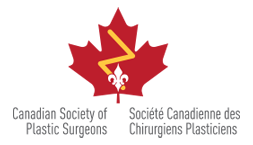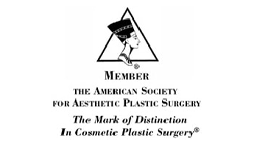Abdominoplasty and Tummy Tuck: What You Need to Know
A frequent problem experienced after major weight-loss or pregnancy is the presence of loose or excess skin, fat and lax abdominal wall tissues. Tummy tuck (also known as abdominoplasty) surgery is the operation performed to address these issues. We hope this reference will help you to obtain effective consultation from a surgeon and decide if the surgery is right for you.
CANDIDACY AND PREOPERATIVE CONSIDERATIONS
There is no ideal weight that must be obtained before abdominoplasty however, if it is likely that he will be losing a significant amount of weight, or for that matter, if a further pregnancy is planned, surgery should be delayed until significant weight changes are complete. That said, abdominoplasty does not prevent a successful subsequent pregnancy. Many patients become more physically active after an abdominoplasty and find that they lose significant weight. It is rare that the weight-loss is significant enough to require a second abdominoplasty, but even if this were to occur, there should be no contraindication to repeating an abdominoplasty. Some patients have a relatively normal amount of skin and subcutaneous fat but the main problem is their stretched-out abdominal wall. Fascia can be stretched out by previous pregnancy in particular, especially when there are twins or polyhydramnios. In this situation, the abdominoplasty can be tailored to primarily repair the abdominal wall facia.
Many patients present seeking “muscle tightening”, and it should be understood that the muscles themselves are not tightened at surgery. Rather, it is the fibrous envelope that surrounds muscles called fascia that is strong enough to be tightened with sutures. Patients are often able to demonstrate a flat tummy when they contract their abdominal muscles but when they relax their muscles their abdomen protrudes. This is because the facia that provides your abdominal wall shape when muscles are relaxed has been stretched out. Fascial plication describes the process of tightening the fascia with multiple sutures. This may be performed down the abdominal midline to repair a gap between the muscles called a diastasis recti. This can also be performed to tighten the fascia across the abdominal wall.
PROCEDURE OVERVIEW
There is no substitute for obtaining expert advice from an experienced plastic surgeon. The risks of complications and poor results are much greater in inexperienced hands. At your consultation, some consideration will be made for the different types of abdominoplasty procedures. If the excess abdominal skin and fat is limited to the area below the belly button, a lower or mini abdominoplasty can be offered. If the excess skin and fat extends around to the sides or the back and extended abdominoplasty, or even a belt-lipectomy or lower body lift, will be a consideration. Some patients will benefit from an umbilical float procedure. And some patients who have experienced massive weight loss have an excess in skin both in the vertical as well the transverse direction and a fleur-de-lis abdominoplasty will be considered. The need for fascial plication should be discussed, and the technique for managing the open space that exists between the skin and the underlying fascia should be considered. Some surgeons continue to rely on drains to try and prevent fluid collections as it is a quicker way of closing the abdomen, but we recommend progressive tension sutures as that allows us to close the dead space between skin and muscle eliminating the need for drains. This also helps prevent spread scars or upward drifting of the lower scar. The presence of previous scars on the abdominal wall may influence the choice of surgery or the height of the transverse scar in some patients. It is generally possible to place the scar low across the pubic area, such that it is covered by a two-piece bathing suit. Consideration is also necessary for areas that will become potentially more conspicuous after abdominoplasty. Although fat in the pubic or flank areas may not be a concern preoperatively, once the abdominal wall is dramatically improved, these areas of fat excess may become more conspicuous.
PROCEDURE BENEFITS
A flatter and firmer abdomen will provide an improved appearance and greater self-confidence. Many patients experience relief from back pain as a stronger abdominal wall allows the back muscles to be more effective. Urinary incontinence is also improved as the lift of the mons pubis provides greater angulation to the urethra and provides better control of urinary flow. It is important to know that abdominoplasty does not change your intra-abdominal volume. Artificially tightening the front of the abdomen will only result in increased pain after surgery, but will eventually stretch out as your fascial can only maintain a certain degree of tension. Even if it were successful, a decrease in projection of the abdomen would be at the price of a wider waistline as the abdominal contents volume does not decrease with plastic surgery.
RISKS AND COMPLICATIONS
In the vast majority of cases the only negative long-term consequence of abdominoplasty is the presence of a scar across the lower abdomen and scar around the umbilicus, and some slight loss of sensation across the lower abdomen. There are a couple of days which can be painful when getting up from a bed or chair but only rarely is this pain a lasting problem. Patients with fibromyalgia or other complex regional pain problems seem more predisposed to pain after any type of plastic surgery. Wound care is necessary for two or three weeks but is relatively simple and can be easily performed by most patients at home. Wound complications are extremely uncommon, unless there is a systemic Illness, history of smoking or previous abdominal surgery that may have damaged the blood supply. The surgery is performed under general anaesthetic as day surgery. Risks of systemic complications like deep vein thrombosis, or pulmonary embolism may be increased in abdominoplasty and careful consideration of the use of blood thinners after surgery should be made.
Our patients are typically mobile immediately after surgery although we would recommend the use of a cane, particularly if fascial plication is performed. Wound care is generally simple and begins when the surgery dressing is removed four or five days after surgery at your postoperative visit. Typically, you would be seen again, 1 to 2 weeks after this visit although this visit can be replaced with a telehealth visit for selected patients who have travelled for surgery.
EXPECTED RESULTS
The improved appearance is dramatic after abdominoplasty There is a tendency for the tissues above the incision to swell for the first few months after surgery, as these tissues had previously drained to the lymph nodes in the inguinal area, and the abdominoplasty incision temporarily interrupts that drainage pattern. The use of an abdominal binder or corset can minimize this swelling. Massage is not recommended as the movement of fluid by massage is very temporary. Wound complications are more common in patients who have mini abdominoplasty. Typically, these patients have very little pain after surgery and tend to be too active which can be challenging for the abdominal wound. In some patients, the abdominal fascia may be discovered at surgery to be thin and weak. As a result, the fascial plication with sutures is limited by the strength of the fascia, and there may be some loss of the fascial tension over time. The use of a corset can minimize this problem by protecting the fascia while it is healing. We recommend that our patients use silicone tape on their scars after the first few weeks to minimize hypertrophic scars. Some patients will benefit from a dynamic dressing like Embrace, but this is rarely the case. Occasionally there is a small cone of excess skin at the end of the incisions, termed a ‘dog ear’. This will improve over time, but rarely a small procedure under local anaesthetic is necessary to flatten these areas.
ALTERNATIVES AND ADDITIONAL PROCEDURES
Liposuction, with only tiny scars, is always a preferred option to abdominoplasty if skin tone is good. Even when there are stretch marks and loose skin liposuction is an option to abdominoplasty provided the patient understands that skin will not be tight after liposuction alone. Radio frequency devices like Thermitight are intended to tighten skin, but do not work well on large areas like the abdomen. Abdominoplasty can be combined with liposuction, but care must be taken to avoid surgeries that are too large to be safe. Insurance may cover the cost of a panniculectomy however, a panniculus only describes the skin which hangs like an apron over the pubis, and is generally a fraction of the abdominoplasty procedure. Some patients choose to travel a distance to see us for abdominoplasty. This can be safe provided they can stay in town for at least five days after surgery and that they understand the need to potentially remain longer or return if further attention is necessary to optimize results.
CONCLUSION
The most common complaint from patients after abdominoplasty is that they wish they had done the surgery sooner! There are few opportunities to improve the quality of your life, both functionally and cosmetically as much as through abdominoplasty, and in the right patient it is an operation we are enthusiastic to offer.















